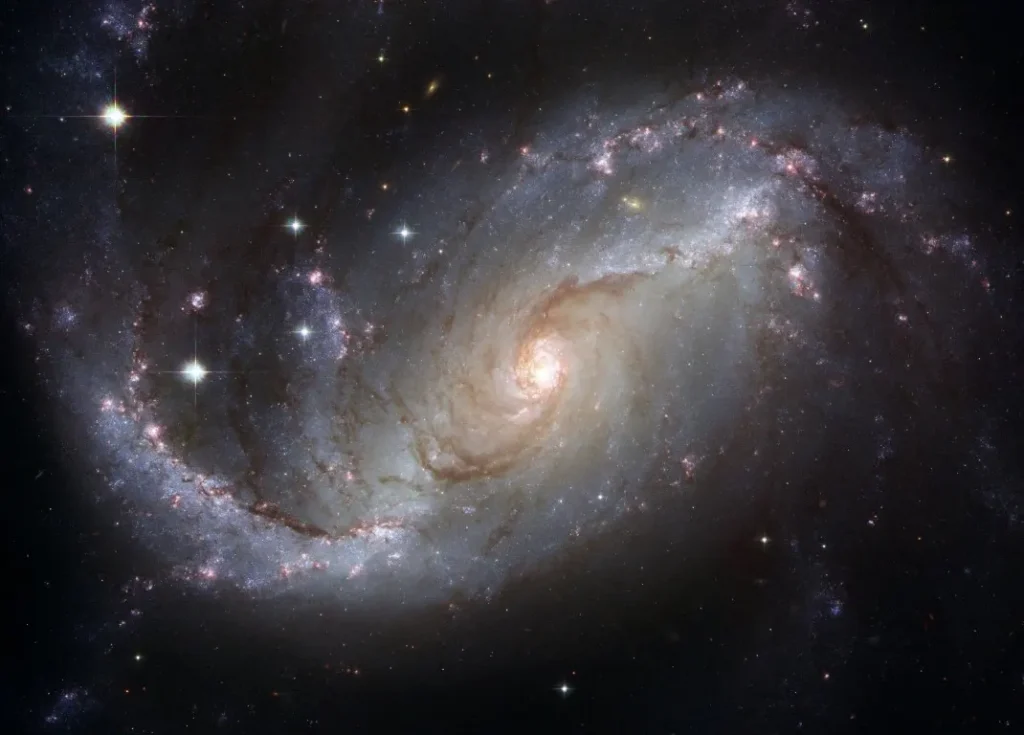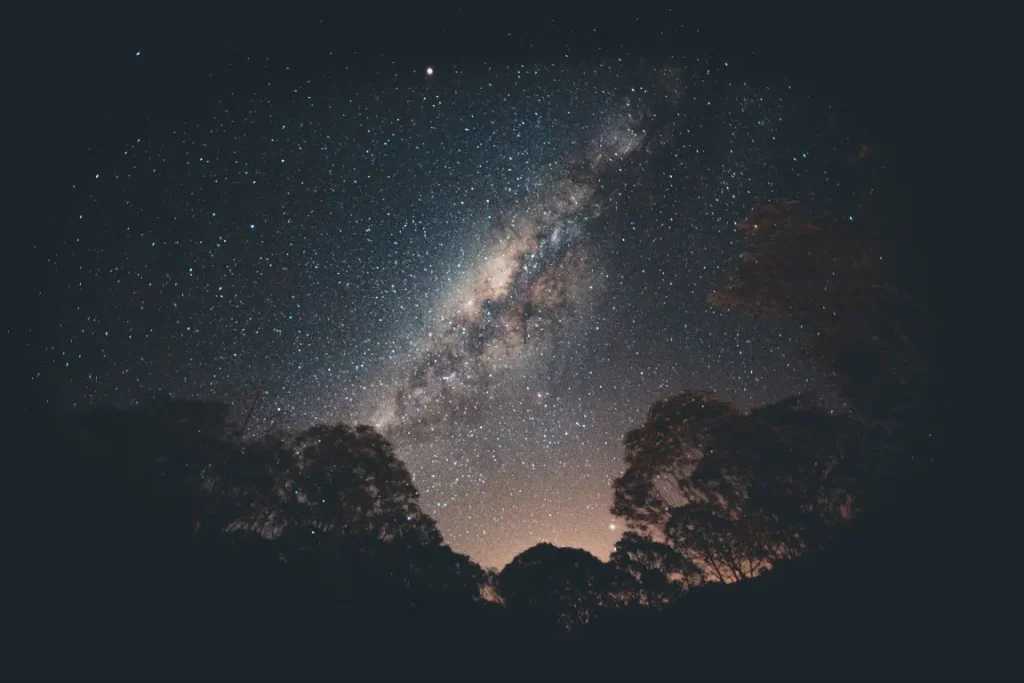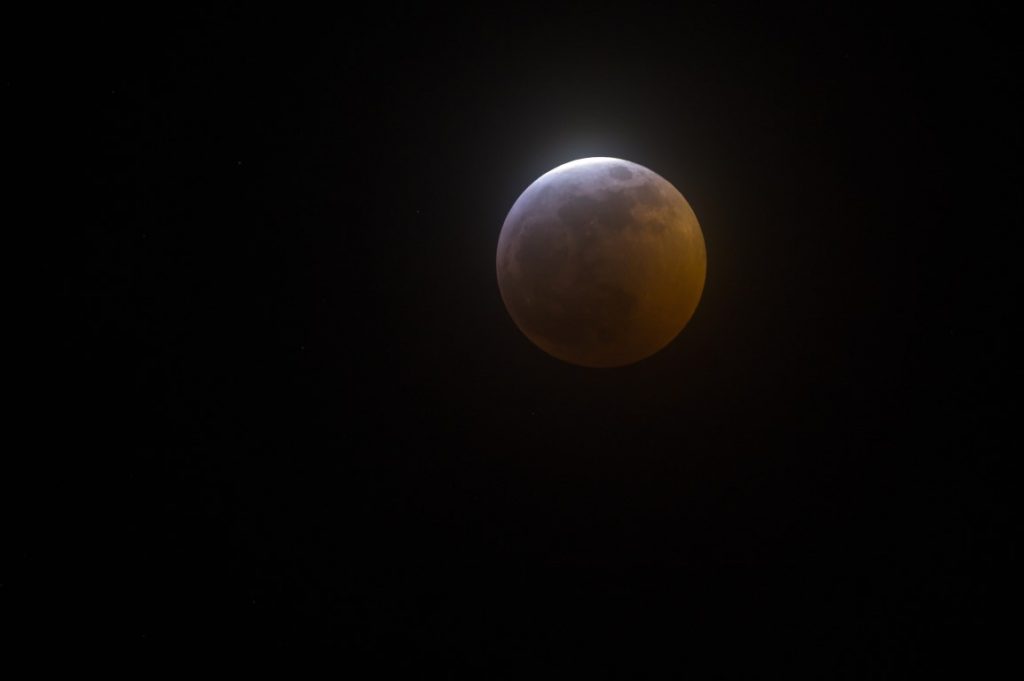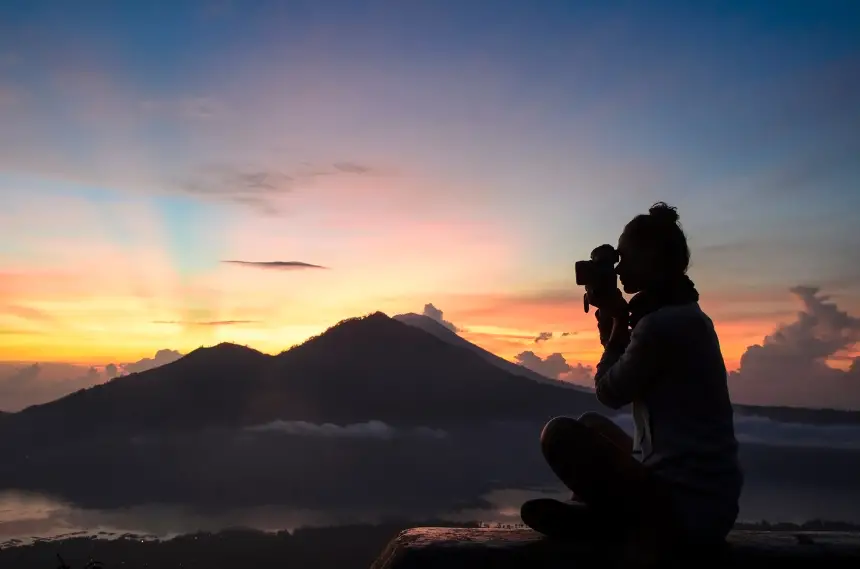
Have you recently taken a moon photo and felt your photographic skills are not up to the game? You should not feel bad about yourself because that happens to 95% of photographers on their first attempt to capture the moon.
Besides top-notch skills, much more is needed to get a crisp, clear moon picture. You need to be aware that the moon produces light, which will affect the images you capture.
Nonetheless, the moon has several phases: new moon, crescent, gibbous, and full moon. Taking photos of some of these images is more problematic than others.
You don’t have to freak out because it is possible to take sharp moon photos. However, you will need to know how to set the camera and lens, among many other factors.
The good news is that all the guidance you need here. Let’s get into it.
What is the best setting for moon photos? (For sharp & clear shots)
Every good photo depends on the setting. Nonetheless, the moon is further than you think and is deceptively bright.
Another thing to note is that the moon is constantly moving, and you need to have that in control.
Besides getting a high-quality lens, you must ensure that the camera settings help counter all the negative factors to get the best shots.
Below are some of the settings that are recommended for sharp moon shots.
- Aperture
The aperture setting controls the amount of light entering the camera, affecting the image’s brightness. It acts as the camera pupil by expanding to allow more light or shrinking to let less light into the camera.
Usually, if the aperture is small, less light gets into the camera, resulting in dark images. Similarly, a larger aperture allows more light resulting in brighter images.
So which aperture setting should we use?
The aperture is indicated in a f/number format ranging from f/1.4 to f/32. This f format represents a mathematical equation that calculates the amount of light passing regardless of the size.
The recommended aperture settings for a full moon range between f/4 to f/8. However, you should note that the optimal aperture setting highly depends on your lens. Thus, some of these shoots may require an f/11 setting.
One rule of a photographer is to test everything. Thus, you should not be scared to change the given range settings and try things out.
- Shutter speed
Shutter speed settings refer to how fast the shutter closes. A fast shutter opens and closes at a quick speed, only capturing a slice of the action, while a slow shutter speed lets in more light and gives the photographer longer exposures.
The appropriate shutter speed depends if you want blurred images or not. Generally, slow speeds cause blur, recommended for nature images, while a fast shutter results in sharp shots.
Since you need sharp photos of the moon, you should set a fast shutter speed. 1/180s shutter speed is highly recommended for beginners.
However, if you do not need to increase your ISO to increase the speed, you can also try 1/250s and 1/300s. But you should never go beyond that when taking moon photos.
- ISO settings
ISO camera settings refer to the camera’s sensitivity to light. The ISO settings supported by the device are shown as a list of numbers with the smallest value, also referred to as the base value ranging at 100, and the next is the double the base value.
A lower ISO value, below or equal to 300, results in high-quality photos and vice versa.
Consequently, for sharp moon photos, you should set the camera ISO at most 300.
- Underexpose slightly
Since the moon is already bright, you should avoid over-exposing the moon. You can achieve the proper moon exposure with the correct ISO shutter speed and aperture settings.
To get an excellent moon photo, you should have your ISO ranging between 100 and 200, the aperture between f/4 to f/8, and the shutter speed approximately 1/125 seconds and 1/250 seconds.
- Raw shooting
Taking your shoots in RAW gives you a lot of editing flexibility.
You have the freedom to adjust the exposure, lighting, or even modify the white balance, which is not possible with other formats.
Even though JPEG format is the best for most photographic situations, it can never beat RAW when dealing with moon shots.
- Use manual mode
Most photographers prefer automatic mode, which automatically adjusts the camera settings depending on the environment.
Actually, if you are used to that camera mode, you are likely to feel intimidated by the manual because you have to set everything yourself.
But that is what is needed in moon photography. You want to set the ISO, aperture, and much more. Thus, you must choose a manual mode to control all these settings.
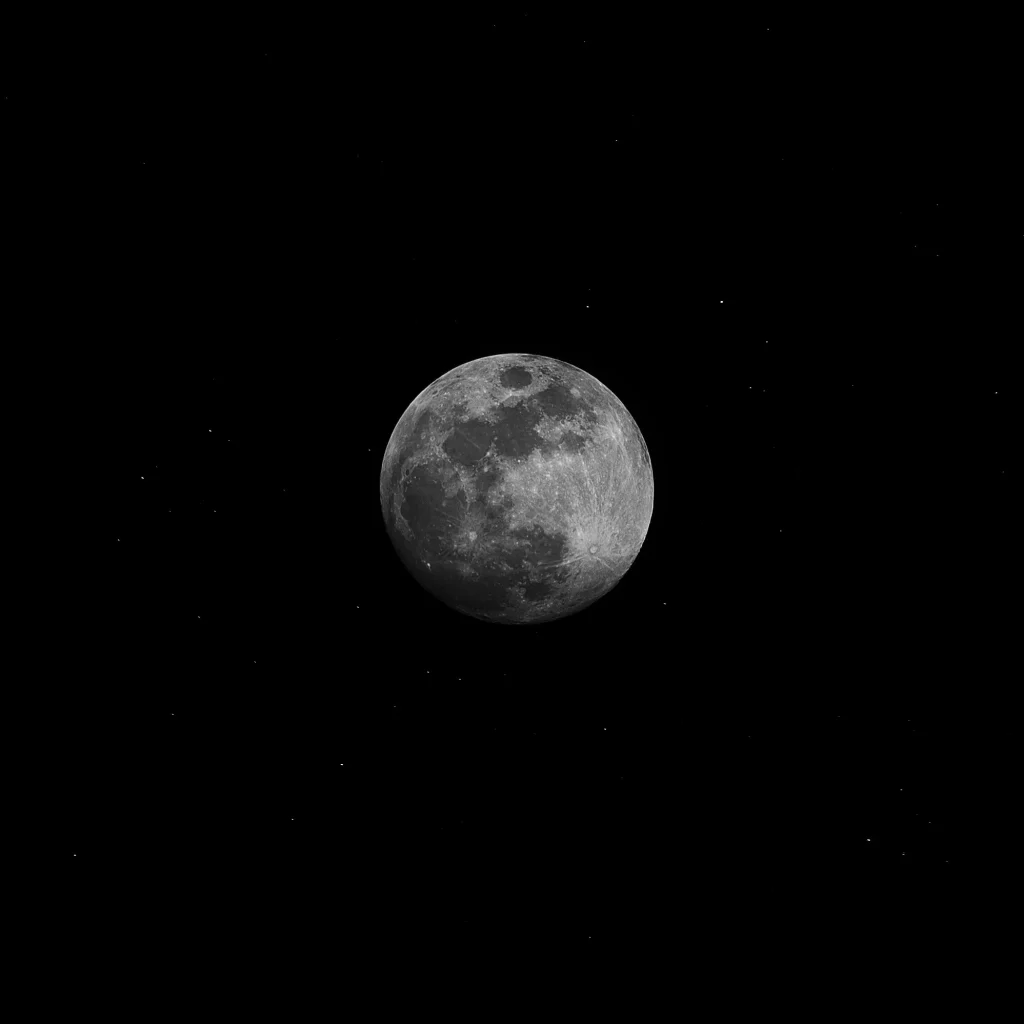
Camera equipment for moon photography
Photography is just like any other profession, which demands a set of tools. However, for moon photographers, you need not only any camera equipment but high-quality camera equipment to guarantee sharp moon images.
- Camera
Any digital camera on the market can take good moon photos without the fear of white bobbing. However, if you want exceptionally sharp and clear moon shoots, you should consider a DSLR camera and micro four-thirds cameras.
- Lens
The lens controls the amount of light reaching the camera sensor, affecting the image’s brightness. In fact, most of the manual settings needed to get sharp moon shoots are done on the lens, making it a critical component in moon photography.
- Tripod
The lack of stability can easily ruin your moon shots or other photos, causing the lens to shake. As a result, the camera does not maintain focus.
To prevent that, get a tripod to place the camera, get it off your hands, and maintain stability.
- Memory card
A memory card is an obvious requirement in photography. You need a place to store the pictures and also it helps to increase the speed of the camera.
- Camera bag
You will probably have to travel to a different location to capture the moon. Where will you place the camera or the lens? Simply you should have with you a camera bag to safely store your equipment.
What lens is suitable for moon photography?
Telephoto lenses are suitable for moon photography. They are long-focus lens that enables you to capture distant objects as if they are near. This type of lens has excellent enlarging capabilities and a shorter physical design. Hence, they are commonly used by photographers who cannot get close to the object for safety reasons or distance.
Below are some of the market-recommended telephoto lenses with pros and cons.
| Camera | Pros | Cons |
| Nikon 200-500mm f5.6 | Long telephoto reach Optical stabilization Removable tripod collar | Not compatible with some D-SLRs Completing lenses may zoom further |
| Sony FE 200-600mm | Reliable and fast focus Internal zoom design Dust resistance | Narrow maximum aperture |
| Canon EF 100-400mm | Extremely sharp images Lightweight and compact Fast and reliable focus | Barrel distortion at 100mm |
| Sony E 55-210mm F4.5-6.3 | Lighter and compact Good contrast and colors Image stabilization Low-budget telephoto zoom lens | No weather sealing |
| Fujifilm XF100-400mm lens | Weather-resistant design Removable tripod foot Teleconverter compatibility | Large for mirrorless lens |
As well as according to my experience since 2020 I can say that Wide- Angles lens are also suitable for moon photography.
So, for getting more idea on best lenses for moon photography I recommend this article for you.
Is 400mm enough for moon photography?
Not any lens that can be used for moon photography. In fact, it is recommended that you always use telephoto lenses which range between 400mm and 800mm.
Thus, a 400mm lens is good enough for moon photography since they have the required magnification and allow you to capture the details of the lunar surface.
Can you photograph the moon with a prime lens
Prime lenses have fixed focal lengths and an aperture range of f2.8 to f1.2. As a result, its aperture does not meet the requirements for taking sharp moon photos. Thus, the prime lens is not recommended for moon photography.
How do I get my camera to focus on the moon?
Since the moon is further from you and rotating, it might take you longer to learn how to focus on it, resulting in blurred images always.
However, it is still possible to focus on the moon and get sharp photos if you follow the below tips;
- Use a fast shutter speed
- Keep the camera off your hands. You should use a tripod
- Use a camera designed for long-distance capturing
- Shot the moon just before the sunset or after the sunrise
- Take sample shoots and adjust the zoom level to get sharp images
How do you shoot the moon with DSLR?
Digital single-lens reflex cameras, commonly called DSLR cameras, are the most recent type of cameras that allow interchangeability of the lenses.
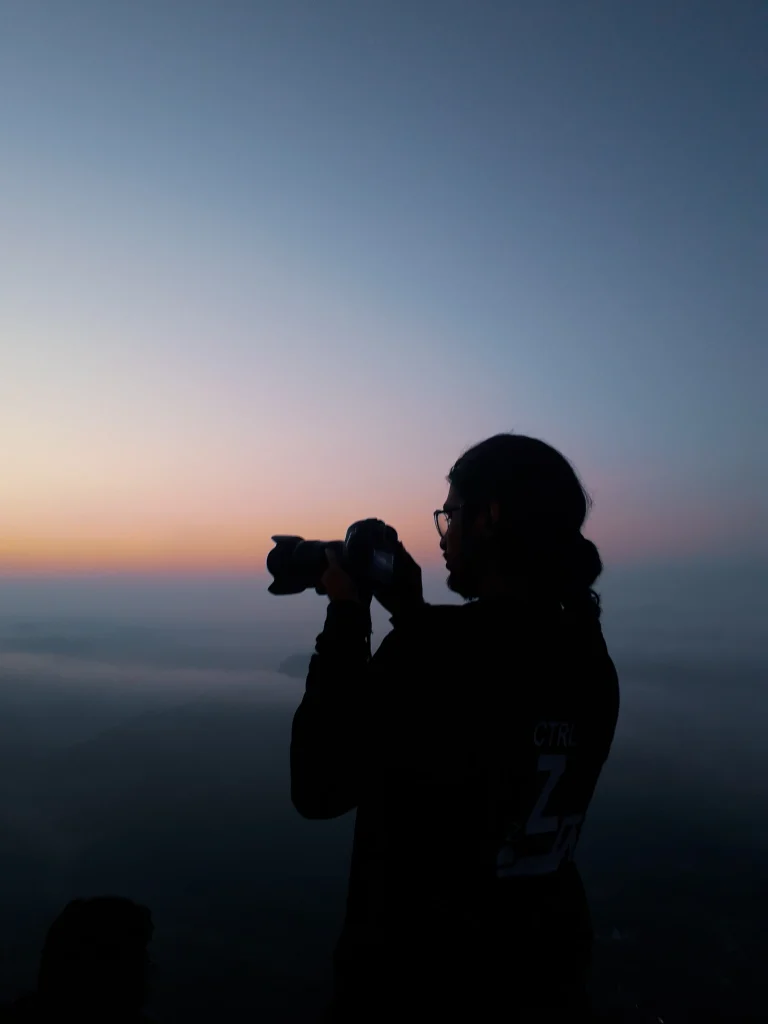
When light enters through the lens, the photographers see their object on the viewfinder via reflection.
To shoot the moon with DSLR:
Step 1: Mount the camera lens correctly.
Step 2: Mount the camera on the stand
Step 3: Set the camera shutter speed, aperture, and any other settings needed
Step 4: Focus the camera and shoot.
You can also check on the video that broadly explains how to use this camera.
Tips to take clear and sharp pictures of the moon?
More than getting the right telephoto lens and any other equipment needed in moon photography, there are things that you should do.
Actually, it is possible to have blurred images with all those expensive equipment if you do not know how to focus the camera on the moon.
Let us look at some tips on how to focus on the moon and get clear and sharp pictures;
- Always use a tripod to have a sturdy foundation
- Avoid using a slow shutter speed to prevent blurred moon shots
- Do not put any filters on the lens
- Using mirror lock-up will increase your chances of capturing tack-sharp moon photo
- Turn off the lens image stabilization technology
- Always use a telephoto lens and set the camera to manual mode
- Shoot the moon just after it rises or before it sets when it is near the horizon
- Auto white balance creates inconsistent results, so avoid it
- Tweak or sharpen the image using any photo-editing software
Why are the moon pictures blurry?
Several reasons your images appear dull even after getting the best lens and camera. Simply getting a good moon image takes more than quality equipment. Why?
- The moon is too far away from your standing point
- The moon is always rotating
- Probably you overexposed the moon
- Lastly, you used a slow shutter speed
How to take good moon pictures with the phone?
Fortunately, modern phones have digital cameras making it possible to capture the moon with them. Nonetheless, you should not forget that these phone cameras are not designed to capture distant images.
Therefore, to capture a beautiful moonshot with a phone, there is much more that you need to do. For instance;
- Adjust the phone settings. Some phone cameras have manual modes; if it doesn’t, you can download a third-party app from the ios or android play store.
- Use the right apps to edit: fortunately, there are several apps in the ios or google play store that you can use to adjust the moon photo characteristics. The most recommended phone editing app is PicStart and Adobe photoshop, which operate on both operating systems.
- Use optical zoom. Optical zoom gives the phone camera telephoto lens capabilities
- Have a phone tripod stand. Stability is quite essential when taking moon photos. Thus, you need a phone tripod stand to keep the phone off your hands.
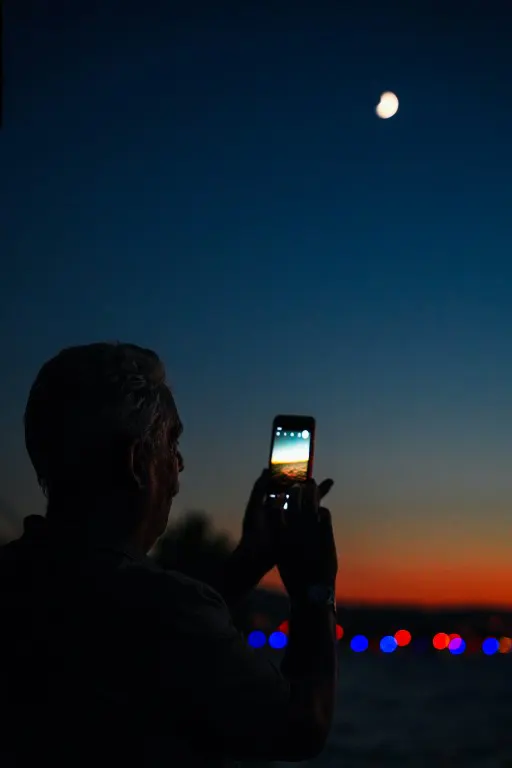
As well as if you want to know more about astrophotography using smart phone. This article on can I use my phone for astrophotography for you.
Final remarks
Taking moon photos is not easy. The moon is bright and in constant motion, and don’t forget that you cannot get close to the moon.
Fortunately, we have already answered you on how you can counter all those problems to get sharp moon photos.
Always have the correct aperture, shutter speed, and ISO settings, forcing you to use manual camera mode to adjust the settings. Also, get the best telephoto lens and equipment needed to get the best moon shoot.
However, if the lens and camera for moon photos are too expensive, you can still use your phone if it has a digital camera.
Justin Parker is a professional photographer and has been in the industry since 2007. He attended the University of Georgia. Justin combines his passion for photography and his interest in writing to give life to this blog which talks about photography in order to help and inspire young photographers.

